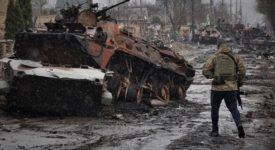The European Parliament and the Council of the European Union have taken key steps towards political agreement on rescEU, the plan to strengthen EU civil protection response to disasters. The European Union has faced a large number of disasters with loss of lives and other damaging consequences for citizens, communities, businesses and the environment, with as many as 200 people killed by natural disasters in 2017. As there were multiple natural disasters that have affected all parts of the EU in recent years, to better protect citizens, rescEU will strengthen the existing EU Civil Protection Mechanism. In particular, a new European reserve of capacities will be established including forest fighting planes, special water pumps, urban search and rescue and field hospitals and emergency medical teams.
The EU’s Civil Protection Mechanism is currently based on a system, through which the EU coordinates the voluntary contributions of participating states to a country that has requested assistance. Offers of assistance are coordinated by the European Emergency Response Coordination Centre based in Brussels. In recent years, extreme weather conditions and other phenomena have stretched the ability of member states to help each other, especially when several member states face the same type of disaster simultaneously. On this occasion, President Jean-Claude Juncker stressed that “a Europe that protects citizens has to be there in times of need. When there is a dangerous forest fire or a flood overwhelming national response, our citizens want action not words. rescEU will ensure concrete solidarity with our Member States hit by disasters.”
The EU will strengthen its response capacities through establishing a common European reserve of capacities to respond to disasters. With the cooperation of all member states, such capacities would include firefighting planes, as well as other means to respond to situations such as medical emergencies or chemical biological radiological and nuclear incidents. Next step will be to co-finance the operational costs of rescEU capacities when used for the EU’s Civil Protection Mechanism operations and increase financial support for capacities registered in the European Civil Protection Pool, including for adaptation, repair, operational costs (inside the EU) and transport costs (outside the EU).







